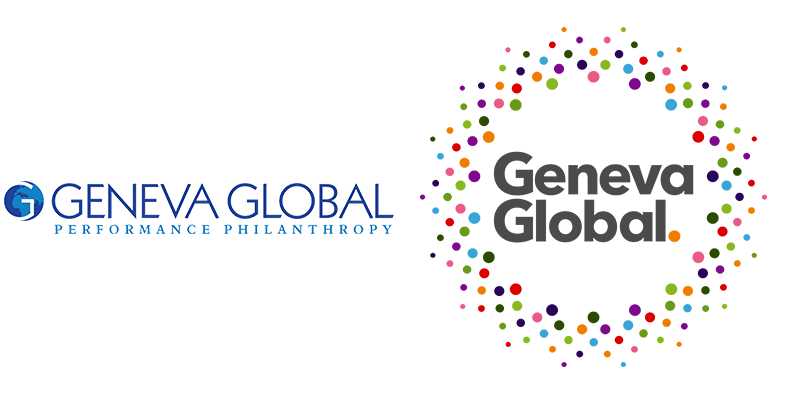Developing an organization’s brand and messaging is tough work. Tough, but necessary.
After all, the brands that win are ones that have a compelling narrative that their customers want to associate themselves with—whether that’s the promise of beautiful design that Apple delivers or the competitive edge that comes from using Nike’s products.
In the philanthropic sector, messaging is just as critical. Perhaps even more so considering that you’re asking for someone’s money with no goods or services delivered to them—their money benefits someone else.
We often have nonprofits, multilateral organizations, and foundations hire us to help them articulate their mission and better communicate their message to potential donors.
We recently went through a similar process for Geneva Global. Having led the company’s rebranding and messaging initiative, I can share some of the lessons I learned along the way.
What do your clients and other stakeholders have to say?
At the start of this process, we selected a diverse mix of clients to talk to, as well as a few “strategic friends”—people that have seen our work up close but aren’t clients.
We asked for their thoughts on our company’s strengths and weaknesses, their perception of our branding and messaging, and what they felt were our key differentiators. We also talked to our staff and asked them the same set of questions.
This was a critical step for a few reasons:
It validates what you think you know.
Some of the things that we knew about our company was echoed by clients, which was reassuring. We often have a sense of our organization’s strengths and weaknesses, but getting external validation is helpful, and can allow you to identify the parts of the brand and messaging to keep and build upon.
It provides feedback to help you strengthen your messaging.
Feedback from our clients helped us see what they valued and saw as our key differentiators. Having this information allows you to focus on the unique value you offer and communicate it in a way that resonates with your target market.
It’s motivating.
It made our entire company feel good to hear what our clients said about us, and even to hear where we had some shortcomings. And by involving our employees in the process, there was buy-in and a collective sense of having some ownership in strengthening the company’s brand.
Don’t expect outside experts to do it all.
We hired a branding agency to help us through the process, which was beneficial in many aspects. For example, by having them conduct the interviews, our clients felt more comfortable freely expressing their opinions. One interviewee quipped that our old logo was “a little bit crap.” That would have stung a lot more had it not been true.

Outside consultants also bring certain expertise to the table that your organization may not have.
For example, clients often come to us because we know the nuances of communicating to ultra-high-net-worth donors.
We’ve also created and managed international development programs in over 100 countries, and that knowledge and expertise is why clients hire us to help them make an incredible difference around the world with their money.
However, even the best outsiders can’t always help. Some things are just too fundamental and personal for others to capture correctly. It has to come from within.
In our case, our executive team had numerous discussions trying to determine the company’s core values. We went round and round, adding and removing, combining and streamlining, in an effort to figure out how to describe what’s core to our culture.
During this time, our CEO, Doug Balfour, shared our dilemma with a CEO peer. She challenged him to think about what really mattered to him personally. After some reflection, he determined four values that were important to have reflected in Geneva Global’s culture. Ultimately only he was best suited to make this decision.
Similarly, we sometimes find that clients need to spend more time doing the hard work of crystalizing their vision and mission. As much as they want us to jump in and help them create messaging, that type of upfront soul-searching must be done first—and it’s best done by the people inside the organization.
Plan for it to be a bit messy.
Unlike decisions about which donors to target or the right program strategy, decisions about the company’s mission, brand identity, and messaging can be a lot more difficult.
I think it’s because individuals see their organization as a reflection of themselves and their values, so we tend to hold on to our opinions more tightly.
That means that while you’d like to stick to a schedule (those who know me know that I do), sometimes important conversations and reflection take longer than you planned.
You may find that you have to take a few steps back before you can move forward with more confidence.
And you have to determine how many people’s opinions to include and when it is and isn’t a democracy.
Our values exercise started out as a democratic process, but eventually it was Doug’s decision. For us, that ended up being the right approach. But it isn’t always easy to figure out until you’re in the thick of things.
Which brings me to my next point.
It’s an opportunity for learning and improvement.
While it can often seem like a slog when you’re in the middle of a rebranding or messaging initiative, growth comes working through challenges.
For me, I learned I needed to better account for and adapt to the work styles of my fellow colleagues on the decision-making team. Some are logical thinkers, while others rely on their intuition. Some focus on big ideas, while others gravitate to the details.
Knowing the various DISC profiles of my fellow colleagues helped me think about how to adjust my style so that everyone was heard and felt bought in, ultimately leading to the best outcome.
Similarly, we’ve had clients that have had to stretch and grow along their own journey.
We recently worked with a very technical team at a multilateral organization. They were experts in their niche field, but we helped them realize that their very detailed and technical communications wasn’t resonating with potential donors. They needed to adjust the way they communicated in order to capture the interest of potential donors.
The reward at the end
This type of project is always a big investment for an organization. There’s the opportunity cost of people’s time, not to mention the expense itself.
But if you’re looking to grow your organization, like we and many of our clients are, it’s an investment that will pay off.
After months of hard work, it’s extremely gratifying to see the pieces come together from our rebranding initiative.
From a new set of language that better reflects who we are and what we do, to a new logo, to launching our new website, this was a company-wide effort and I can’t thank my colleagues enough for their participation and support throughout this process.
We’re excited to introduce our new-and-improved identity to you! I hope you take a minute to look through our website and let us know what you think. You can comment on our LinkedIn and Twitter pages or email us at [email protected].
